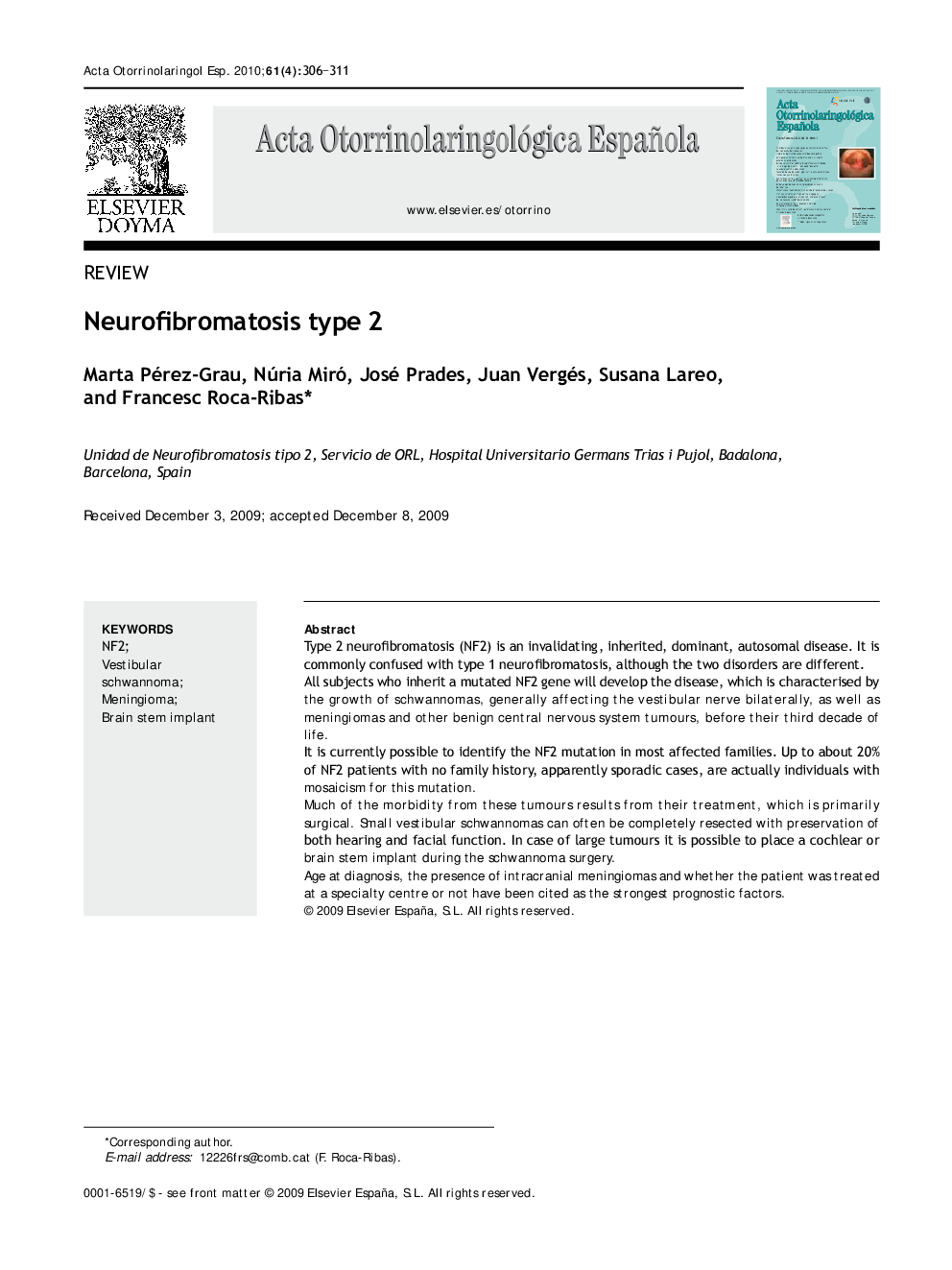| Article ID | Journal | Published Year | Pages | File Type |
|---|---|---|---|---|
| 4101410 | Acta Otorrinolaringologica (English Edition) | 2010 | 6 Pages |
Type 2 neurofibromatosis (NF2) is an invalidating, inherited, dominant, autosomal disease. It is commonly confused with type 1 neurofibromatosis, although the two disorders are different.All subjects who inherit a mutated NF2 gene will develop the disease, which is characterised by the growth of schwannomas, generally affecting the vestibular nerve bilaterally, as well as meningiomas and other benign central nervous system tumours, before their third decade of life.It is currently possible to identify the NF2 mutation in most affected families. Up to about 20% of NF2 patients with no family history, apparently sporadic cases, are actually individuals with mosaicism for this mutation.Much of the morbidity from these tumours results from their treatment, which is primarily surgical. Small vestibular schwannomas can often be completely resected with preservation of both hearing and facial function. In case of large tumours it is possible to place a cochlear or brain stem implant during the schwannoma surgery.Age at diagnosis, the presence of intracranial meningiomas and whether the patient was treated at a specialty centre or not have been cited as the strongest prognostic factors.
ResumenLa neurofibromatosis tipo 2 es una enfermedad invalidante que se hereda de forma autosómica dominante. A menudo se ha confundido con la neurofibromatosis tipo 1, aunque son patologías distintas.Todos los sujetos que hereden una mutación en el gen de la neurofibromatosis tipo 2 (NF2) desarrollarán dicha enfermedad, caracterizada por el crecimiento de schwanomas, habitualmente vestibulares y de forma bilateral, así como meningiomas u otros tumores benignos del sistema nervioso central, antes de los 30 años de edad.Actualmente, podemos identificar la mutación del NF2 en la mayoría de las familias afectas. Hasta un 20% de los pacientes afectos de NF2 sin historia familiar, aparentemente casos esporádicos, son en realidad individuos con mosaicismo para esa mutación.La morbilidad de esos tumores es en gran medida debida a su tratamiento, que es principalmente quirúrgico. Cuando son pequeños, los schwanomas vestibulares se pueden resecar completamente con preservación tanto de la función auditiva como facial. En caso de tumores grandes se puede colocar un implante coclear o bien de tronco cerebral durante el mismo acto quirúrgico.Los principales factores pronósticos son: la edad media al diagnóstico, la presencia de meningiomas intracraneales y si el paciente fue tratado o no en un centro especializado.
